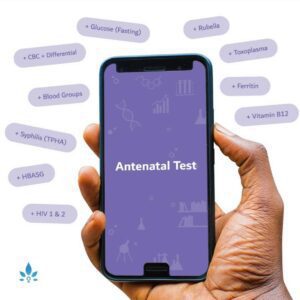Stillbirth – Knowing the Risks and Warning Signs


- Stillbirth is the loss of a baby in the womb after 24 weeks of pregnancy.
- Every year there are an estimated 2.6 million stillbirths worldwide.
- One third of stillbirths are unexplained. Around a quarter are caused by birth defects. Other risk factors include higher age, drug use and multiples.
- Early warning signs of stillbirth include change the baby’s movements, bleeding, itching, fever and headaches.
One stillbirth tragically occurs every 16 seconds according to the World Health Organisation (WHO). The National Institutes of Health (NIH) acknowledges that there is no universally accepted definition for when a fetal death is called a stillbirth. Rather than a miscarriage and the interpretation of gestational age differs by country.
What causes stillbirth?
Around one third of stillbirths are unexplained. According to the Centers for Disease Control and Prevention (CDC) stillbirth can happen to women of any age, background or ethnicity. The CDC goes on to say that the loss of a baby due to stillbirth occurs more commonly among:
- Women with a higher maternal age;
- Women who smoke or use recreational drugs during pregnancy;
- Black women;
- Women of a low socioeconomic status;
- Women who are pregnant with multiples (twins, triplets and quadruplets); and,
- Women who have had a previous pregnancy loss.
Blood-clotting disorders and chronic diseases (diabetes, heart disease, lupus, obesity and thyroid disease) are also linked with increased risk of stillbirth. As are complications with the placenta and umbilical cord, maternal infections (group B streptococcus, malaria, HIV and some STDs) and physical trauma.
Research says;
The Cleveland Clinic says birth defects are the cause of around 25% of stillbirths. While Tommy’s says that failure of the placenta is the most common known reason for a baby to be stillborn. Half of all stillbirths linked to complications with the placenta. The risk of the placenta calcifying increases when the baby reaches full term. Over half of all placentas will experience some degree of calcification at full term. Placental calcification preterm ranges wildly – from 3.8 to 23.7 percent – based on the risk factors listed above.
What are the warning signs of stillbirth?
Stillbirth can occur without any obvious indicators but there are some signs to look for. If you experience any of the below symptoms during your pregnancy you should contact your medical team immediately.
- Change in baby’s movements: Most women will start to feel the flutterings of their baby moving anywhere from 16 weeks onwards. By around 24 weeks the baby’s movements will be becoming more regular. UK charity Tommy’s recommends that you learn to recognise your baby’s pattern of movements in the womb. Some women notice that their baby seems more active in the evenings. This is when they sit down and put their feet up or in response to the music beat during an exercise class. Others find their baby’s kicks increase when they eat spicy foods or drink a large glass of cold juice. The important point here is that if you notice any change in your baby’s movements – if the kicks suddenly seem less frequent or not as strong as usual – you should contact your doctor immediately. As this may be a sign that your baby is not getting enough oxygen or nutrients.
- Vaginal spotting or bleeding and cramping: This could be the sign of placental abruption, a serious condition in which the placenta separates from the wall of the uterus before birth.
- Vaginal discharge or fluid leaking from the vagina: Discharge could be linked with an intrauterine infection or infection in the womb. Leaking fluid could be your waters breaking early.
- Feeling something in your vagina during pregnancy: This might be the sign of an umbilical cord prolapse which would mean your baby isn’t getting enough oxygen.
- Itching: Severe itching on your palms and soles of your feet may be a sign of Intrahepatic Cholestasis of Pregnancy (IHP). It is a pregnancy-related liver condition that can lead to stillbirth. Also called obstetric cholestasis you should report any itching to your physician.
- Fever: Some infections during pregnancy can be dangerous for an unborn baby.
- Headaches, blurred vision or swelling: These can be symptoms of preeclampsia which can lead to loss of pregnancy in the womb.
Your medical team will monitor your symptoms including carrying out an ultrasound to check your baby and using a doppler ultrasound to measure the fetal heart rate. It is important that you attend all your routine antenatal tests and scans and report any concerns or unusual symptoms you have. However slight you feel they may be, as soon as you notice them.
Getting the support you need after stillbirth
Losing a baby at any stage is devastating and it is important that you, your partner and family get the physical and emotional support you need. Your healthcare team will be able to advise on the local support networks and dedicated charities there to support you.
—
Nabta is reshaping women’s healthcare. We support women with their personal health journeys, from everyday wellbeing to the uniquely female experiences of fertility, pregnancy, and menopause. You can track your symptoms and get personalised support by using the Nabta app.
Get in touch if you have any questions about this article or any aspect of women’s health. We’re here for you.
Sources
“Stillbirth” The Cleveland Clinic https://my.clevelandclinic.org/health/diseases/9685-stillbirth
“Stillbirth” WHO, https://www.who.int/health-topics/stillbirth#tab=tab_3
Tavares da Silva, F, “Stillbirth: Case definition and guidelines for data collection, analysis, and presentation of maternal immunization safety data” Dec 2016, Vaccine, https://www.ncbi.nlm.nih.gov/pmc/articles/PMC5139804/
“What is Stillbirth” CDC https://www.cdc.gov/ncbddd/stillbirth/facts.html
“Causes of Stillbirth” Tommy’s, https://www.tommys.org/baby-loss-support/stillbirth-information-and-support/causes-stillbirth













































